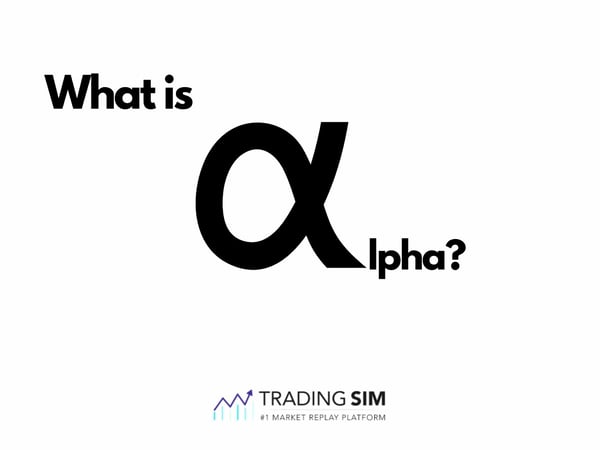In trading, alpha refers to the excess or above-market return generated by a trader or a trading strategy over a period of time. It is also commonly used to evaluate the performance of an investment, trader, or portfolio manager. A positive alpha denotes outperformance whereas a negative alpha value represents underperformance in relation to a benchmark. Alpha is a measure of past performance, so it does not mean that the investment or trade will continue the same performance in the future as well.
What is a good alpha for a stock?
A positive alpha of a stock can be considered a desirable value as it means that the stock yielded a better return than its benchmark. Some stocks beat the benchmark index by a wide margin, some barely manage to surpass, while some fall short of it.
For example, Tesla stock outperformed the S&P 500 index by 21% in 2021, generating a return of 50% compared with the S&P's return of 29%. However, the exact value of alpha can be calculated using the alpha equation and would be somewhat different from the simple difference between the benchmark and the stock’s returns. In short, we can say that the higher the stock's alpha, the higher the margin of its outperformance in comparison to the benchmark.
How do you find the alpha in trading?
To calculate the alpha of a stock you are trading, you need to know the values of the following variables that form part of the alpha calculation:
- Risk free rate = 4%
- Beta of the security = 1.12
- Market Return = 14%
- Risk Premium (Market Return - Risk-free rate) = 14% - 4% = 10%
- Actual Rate of Return = 20%
For example, if a stock generated a return of 22% compared with the benchmark or market return of 20%, we can calculate its alpha using the following equation:
Alpha = Actual Rate of Return – Risk-Free Rate – β * Market Risk Premium
We can input the values in the equation above to calculate the stock’s alpha.
Alpha = 20% – 4% – 1.12 x 10%
Alpha = 16% – 11.2%
Alpha = 4.8%
Even though the stock beat the market by 6%, the alpha turned out to be 4.8%, denoting that the trader generated an excess return of 4.8%. As per the Capital Asset Pricing Model (CAPM), the stock’s expected return was 11.2%, but the stock gained 16% above the risk-free rate, and, hence, the alpha of 4.8%.
Alpha example
While browsing different investment options such as mutual funds or exchange-traded funds, you might find the alpha of these investments. The metric discloses the excess returns yielded by the investment on top of the market returns. For example, if a stock gained 10% whereas the benchmark index rose by 8%, the stock outperformed the benchmark and generated a positive alpha. In contrast, if the stock had generated a lower return than that of the market, the stock’s alpha would have been negative.
Is trading alpha good?
Alpha is a historical measure of the stock’s performance, which means that it only shows the past performance of the stock. So, selecting and trading stock solely based on its alpha might not be a good idea. You need to conduct fundamental analysis and determine the reasons behind the positive or negative values of the stock’s alpha before trading it.
However, you must remember that alpha also measures the performance of the stock trader, the entry and exit points, buying and selling decisions, and the returns generated. If a trader buys and holds a stock without actively trading it, the stock’s alpha would denote the passive performance of the trader.
If there is something fundamentally wrong with the stock, you might avoid buying it or consider shorting it, depending on your trading strategy. Positive and high trading alpha can confirm the abilities, skills and effectiveness of a trader’s trading strategy.
What does negative alpha mean?
A negative alpha means that the stock, security, or a portfolio of investments has underperformed the benchmark. Similarly, a zero-value alpha means that the investment has generated returns similar to the market. A negative alpha could be a result of different scenarios. For example, if a trader generated negative alpha on his trades, it might be a sign of a bad trading strategy, overtrading, high trading costs, or, simply, wrong stock selection.
Final Thoughts on Alpha
Alpha allows investors to evaluate the performance of a mutual fund or an investment as to how much excess return the fund generated in comparison to the market over a period of time in relation to a benchmark. Traders can also monitor their trading performance by calculating their own alpha. A higher value of alpha denotes that the portfolio manager added value to the investment and generated above-market returns. In contrast, a negative alpha represents an investment’s underperformance in comparison to the benchmark.







 Futures
Futures 
